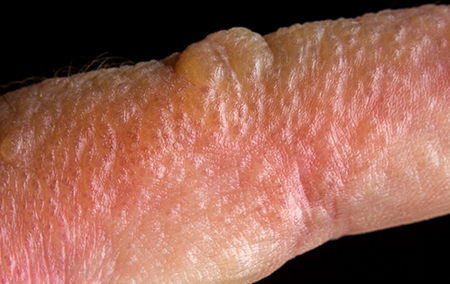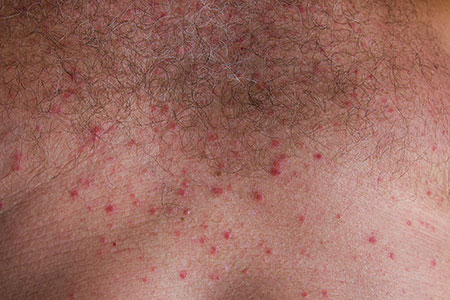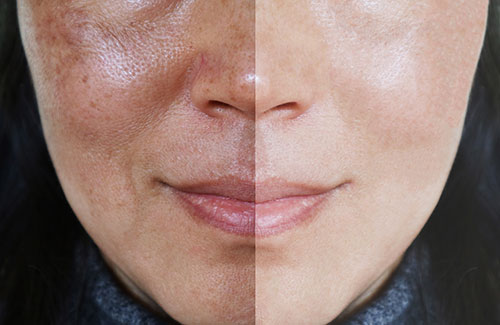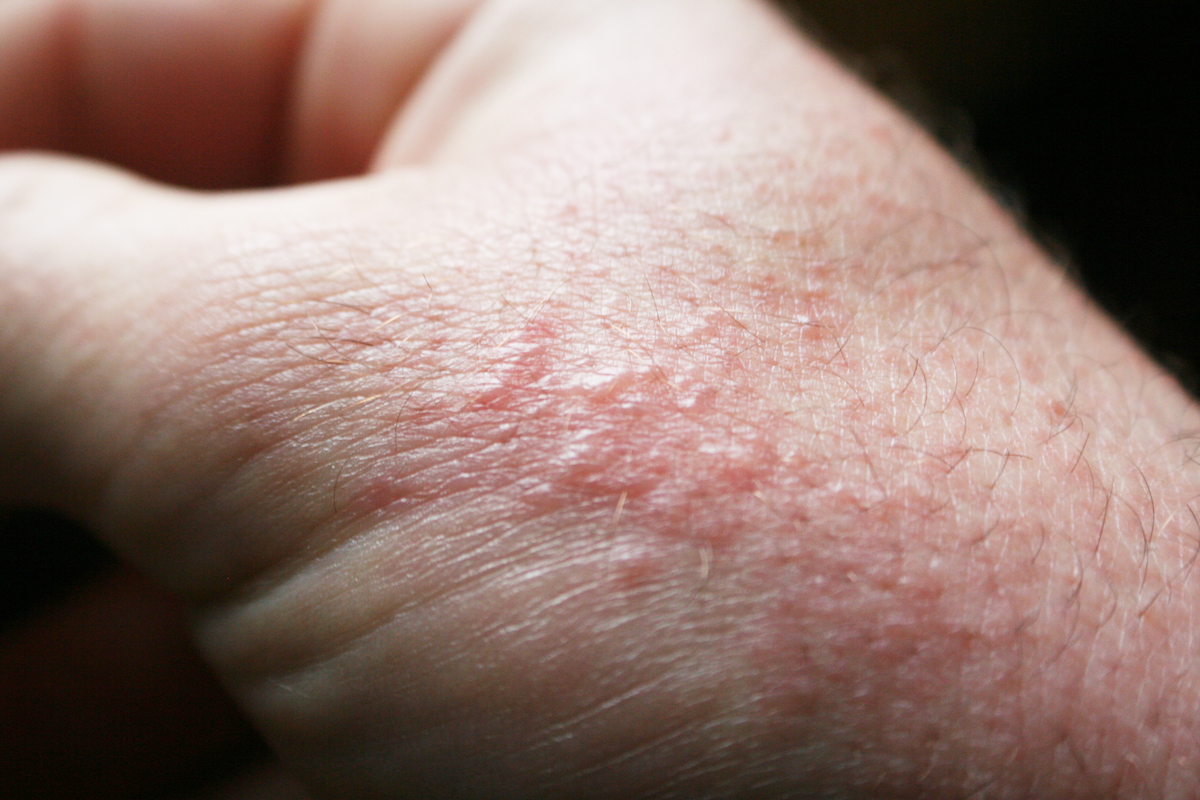One of the most common causes for a summer visit to the doctor’s office is a rash. Although a sudden outcropping of skin bumps and lumps can be disturbing to anyone, summer rashes are often treated effectively.
A rash that appears suddenly and spreads quickly on both sides of the body with no other symptoms, such as fever or shortness of breath, is usually transient — even if its appearance isn’t particularly pleasing aesthetically.
Here are five rashes associated with summertime activities:
Contact Dermatitis (from plant oils)
Poison ivy (below), poison oak (see the featured photo at top) and poison sumac all contain oil that can cause a widespread rash after an allergic reaction to the oil. This oil, known as urushiol, can easily be transferred form pet fur and sports gear to the skin even if direct exposure seems unlikely.
 The rash itself is not contagious and does not spread, even if in the beginning it seems to be spreading over several days. The “spread” is actually a delayed allergic reaction. The rash can resolve on its own in a few weeks, but a steroid taper will speed up the process and reduce itching.
The rash itself is not contagious and does not spread, even if in the beginning it seems to be spreading over several days. The “spread” is actually a delayed allergic reaction. The rash can resolve on its own in a few weeks, but a steroid taper will speed up the process and reduce itching.
When a doctor’s visit is mandatory: Any pain, or swelling of the eyelid requires intervention, as does the beginning of an infection on the skin due to vigorous scratching of the rash.
Miliaria (classic heat rash)
If you’re an athlete maintaining an intense workout schedule even as the temps creep up this summer, you may fall victim to heat rashes. Sometimes these rashes can surprise you because they usually are not painful or extremely itchy (although they can be). They result from collections of blocked sweat glands. Oil and debris (like skin cells) can block sweat glands and lead to these tiny, itchy, prickly bumps.
 Miliaria rubra is one variation of the heat rash that occurs in deeper layers of the skin and can cause red burning skin. The more common version is Miliaria crystallina. It consists of small clear vesicles filled with sweat and is asymptomatic.
Miliaria rubra is one variation of the heat rash that occurs in deeper layers of the skin and can cause red burning skin. The more common version is Miliaria crystallina. It consists of small clear vesicles filled with sweat and is asymptomatic.
How to prevent a heat rash: Wear cotton clothing. Limit intense outdoor activity to the mornings and evenings on very hot days, and shower as soon as you’re done with that outdoor workout.
Sun exposure rashes (Melasma)
If you notice new brown or gray-brown patches on your face after a day on the beach appear suddenly, don’t immediately think skin cancer. Think melasma. It typically shows up on the cheeks, upper lip, bridge of the nose, forehead, or chin. The rash is common in pregnancy, but those with a genetic predisposition may notice these patches when out in the sun as well.

Some people can develop a sun sensitivity if on certain medications, like doxycycline. Sun exposure can cause irritated skin, and in some cases blisters when the skin is sensitized if on these medications.
Prevention: Sunblock, sunblock, sunblock.
Erythema Migrans (Cercarial Dermatitis)
 This is the classic bullseye rash means you’re in the early stages of Lyme disease. The illness is caused by Borrelia burgdorferi, a bacteria carried by ticks and transmitted from deer ticks and rodents.
This is the classic bullseye rash means you’re in the early stages of Lyme disease. The illness is caused by Borrelia burgdorferi, a bacteria carried by ticks and transmitted from deer ticks and rodents.
If you have history of tick bites and see a bullseye rash (even if NOT AT THE SITE of the bite), see a doctor. The rash is usually not itchy and can look like beefy tiny red ring in the very early stages.
Disclaimer: See your doctor.
Swimmer’s Itch
If you’re swimming or wading in lakes, oceans or other bodies of water, be mindful of water parasites that can cause this classic water rash called cercarial dermatitis. If exposed to these parasites, blisters or welts can appear soon after the water evaporates from the body because the parasites burrow in the skin when they have no water droplets to hold on to.
 The parasites that cause this “swimmer’s itch” normally live in sea birds or ducks, but do not mature into adults in the human body. Rest assured that the dermatitis they cause is temporary as humans aren’t suitable hosts, so the parasites soon die while still in your skin and don’t cause other symptoms.
The parasites that cause this “swimmer’s itch” normally live in sea birds or ducks, but do not mature into adults in the human body. Rest assured that the dermatitis they cause is temporary as humans aren’t suitable hosts, so the parasites soon die while still in your skin and don’t cause other symptoms.
Watch the kids: Children are susceptible because they tend to splash around in the shallow warm water. Rub the skin with a towel after getting out of the water, but if the skin stings with rubbing, stop since you’re too late. Rubbing will create more irritation due to this temporary dermatitis known as seabather’s eruption. Instead prevent an attack by applying waterproof sunscreen, since it has been reported to protect the skin from the parasite.
If you experience a serious illness or injury, go to the nearest Emergency Room. Find a list of Hartford HealthCare Emergency Services locations here.
Need to see your doctor? New Patient? For more information about Hartford HealthCare virtual health visits, click here.
Click here to schedule a virtual visit with a Hartford HealthCare-GoHealth Urgent care doctor. Find out more about COVID-19 antibody tests here.
Sign up for our “Coping with COVID” podcast series here.
Stay with Hartford HealthCare for everything you need to know about the coronavirus threat. Click here for information updated daily.
Questions? Call our 24-hour hotline (860.972.8100 or, toll-free, 833.621.0600).


